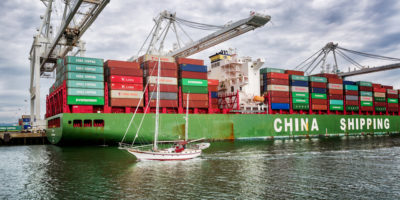NDA — Non Disclosure Agreement
11 декабря 2018
- Распространение
- Международная торговля
Very frequently, different business settings present the opportunity to sign a Non-Disclosure Agreement (“NDA”) and a Memorandum of Understanding (“MoU”) or Letter of Intent (“LoI”), so much so that these three acronyms – NDA, MoU and Lol – are now commonly used, particularly throughout international negotiations.
However, often times, these contracts are used in an improper way and with different purposes than those for which they were established in international commercial praxis, with the result that they are either not useful because they do not effectively protect the parties’ interests, or are counterproductive.
We shall start by taking a look at the characteristics of the Non-Disclosure Agreement – NDA – and how it should be used.
What is a NDA?
The NDA is an agreement whose function is to protect the confidential information that the parties (generally identified, respectively as the “Disclosing Party” and the “Receiving Party”) intend sharing, in different possible scenarios: forwarding of information for a preliminary due diligence relating to an investment, the evaluation of commercial data for a distribution contract, technical specifications related to a certain product that is subject of transfer of technology etc.
The first step of the negotiations, in fact, often requires that different types of information whether technical, financial or commercial, are made available by one or both parties, and the need for this information to remain confidential (hereinafter the “Confidential Information”) during and after the conclusion of the negotiations.
NDA — Who are the parties?
Right from the recitals of the agreement, it is very important to correctly identify the parties obliged to safeguard the information and maintain its confidentiality, especially when group companies are involved, and where the interlocutors may be many and located in different countries. In such cases, it is advisable to oblige the Receiving Party to guarantee confidentiality by all the companies by means of a specific clause. It is also important that the agreement accurately indicates the people belonging to the Receiving Party’s organization (such as: employees, technical consultants, experts, collaborators, etc.) who have a right to access the information, if possible by signing a confidentiality agreement by all the people involved.
NDA — What is Confidential Information?
The use of recycled NDA templates, found on forms or proposed by the counterparty is certainly not a recommended practice, but unfortunately one that is very widespread. These templates are very often generic and include broad definitions of Confidential Information as well as very detailed lists which actually include all contents of a business activity, often including areas that are not applicable to the object of the activity being negotiated, or information that is actually not reserved.
The problem regarding these templates is that it is difficult, ex post, to verify whether certain information would have been included in the Confidential Information, for example either because it would be difficult to determine whether the Receiving Party would have already been in possession before the signing of the NDA, or because the information would not have been expressly mentioned in a clause that contains a very detailed list, but which does not include the individual piece of information that is of interest, or lastly because after the signing of the NDA, the Confidential Information would have been shared using non-secure and non-traceable procedures (for example as an email attachment).
The best way to proceed is that of identifying in a very specific way only the information that needs to be shared, listing the documents in an attachment to the NDA, thereafter making them available in a format that leaves no doubt regarding their confidentiality, for example by marking them with a watermark or stamp “Confidential under NDA”. Furthermore, a good praxis is to provide access to the Confidential Information only through a secure way (such as a reserved cloud , accessible only through an individual user name and password that is given to authorized people).
NDA — Prohibition from using the Confidential Information
Often times through the standard NDA templates, the Receiving Party is only obliged to maintain the Confidential Information reserved, without being prohibited from its use which – especially in cases of competitor companies – may be more dangerous than divulging the information: imagine technology development or patents based on data acquired, or the use of lists of clients or other commercial information. To highlight and strengthen this obligation it would be more correct to name the document Non-Disclosure and Non-Use Agreement (“NDNUA”).
NDA — Duration
The function of the NDA is to protect the Confidential Information for the entire time during which it needs to be shared between the Parties. It is therefore important to clearly indicate the last moment the information will be used and – in the event that the Receiving Party is in possession of a copy of the Confidential Information – ensure that the Receiving Party returns or destroys the documents and shall maintain the Information reserved and shall refrain from using the Information for a few months (better years) following the termination of the NDA.
Breach of the NDA
Attempting to quantify the damages resulting from a breach of the confidentiality clause is generally very complex: it may therefore be useful to provide for a penalty clause, that establishes a certain amount for the damage deriving from a contractual non-fulfilment. To this effect it is important to consider that the estimate of the penalty shall be reasonable in relation to the damage assumed to derive from the breach of confidentiality, and that different types of penalties can be established according to different cases of non-fulfilment (for example, registration or counterfeit of a patent through the use of shared technical information, or contact with certain business partners).
There is also another advantage inserting a penalty clause in the NDA: if during the negotiations the Receiving Party objects to the clause or requests it to be reduced, it may indicate a mental reservation of default, and in any case is symptomatic of a fear of having to pay this amount, which would have no reason to exist if the party intended abiding strictly to the contractual obligations.
NDA — Litigation, jurisdiction and applicable law
Even in this case there is an unfortunate practice, which is that of relegating this type of clause to the end of the agreement (concerning the so-called midnight clauses, to this effect you may refer to this post on legalmondo) and thus not dedicate enough attention to its contents, which may lead to adopting clauses that are completely wrong (or worse still, null).
In reality this is a very important provision, which leads to ensuring contractual enforcement and/or obtaining a judicial decision that may be executed in a rapid and effective way. There is no solution that applies to all cases and the individual negotiation need to be considered: for example in an NDA with a Chinese counterpart it may be counterproductive to choose the Italian jurisdiction and apply Italian law, given that in the event of non-fulfilment it is usually necessary to take legal action and enforce the judicial or arbitral decision in China (even with interim – urgent measures). It would therefore be more opportune, to draft an NDA with an English/Chinese bilingual text and provide for an arbitration in China, applying Chinese law.
NDA — Conclusion
The NDA is a fundamental tool to protect confidential information, and this can be achieved only if it is well drafted, taking into consideration the specific case at hand: it is advisable to refrain from the “do-it-yourself” and seek legal advice from a lawyer who knows how to draw up an NDA bearing in mind all the characteristics of this type of contract (type of negotiation, information to be shared, location of the parties and countries where the NDA will be executed).
























